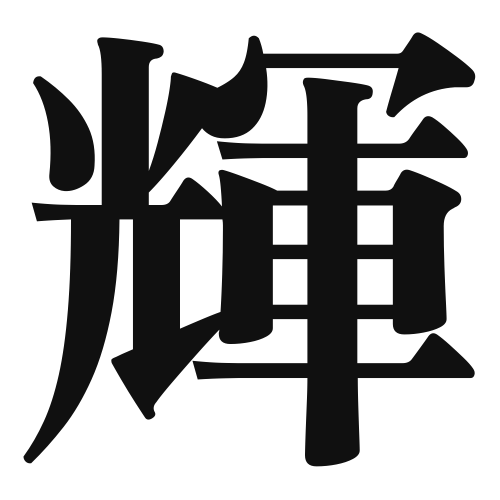1. Overview of Meaning
The kanji “輝” (ki) means “shine” or “radiance.” It conveys the idea of brightness and brilliance, often associated with light and beauty.
2. Formation and Radical
Formation of the Kanji: The kanji “輝” is a phonetic-ideographic character (形声文字). It combines the radical for “light” (光) with a phonetic component that suggests its pronunciation.
Radical: The radical of “輝” is “車” (kuruma), which means “car” or “vehicle.” This radical is often associated with movement and speed, adding a dynamic quality to the meaning of the kanji.
3. Examples of Usage
Common Words and Phrases: Some frequently used words that include “輝” are:
- 輝く (kagayaku) – to shine
- 輝き (kagayaki) – radiance or brilliance
Example Sentences in Daily Conversation:
- 彼女の笑顔はまるで太陽のように輝いている。
(Her smile shines like the sun.) - 星が夜空で輝いている。
(The stars are shining in the night sky.)
4. Synonyms and Antonyms
Similar Kanji: A kanji with a similar meaning is “光” (hikari), which means “light.” While both convey brightness, “光” refers more to the concept of light itself, whereas “輝” emphasizes the quality of shining or radiating.
Antonyms: A kanji with an opposite meaning is “暗” (an), which means “dark” or “darkness.” This contrasts with the brightness and radiance represented by “輝.”
5. Cultural and Historical Background
Connection to Japanese Culture: The concept of “輝” is often associated with beauty and positivity in Japanese culture. It is used in various contexts, from describing nature to expressing admiration for someone’s qualities.
Proverbs and Idioms: One common expression is “輝く未来” (kagayaku mirai), meaning “a shining future,” which reflects hope and optimism for what is to come.
